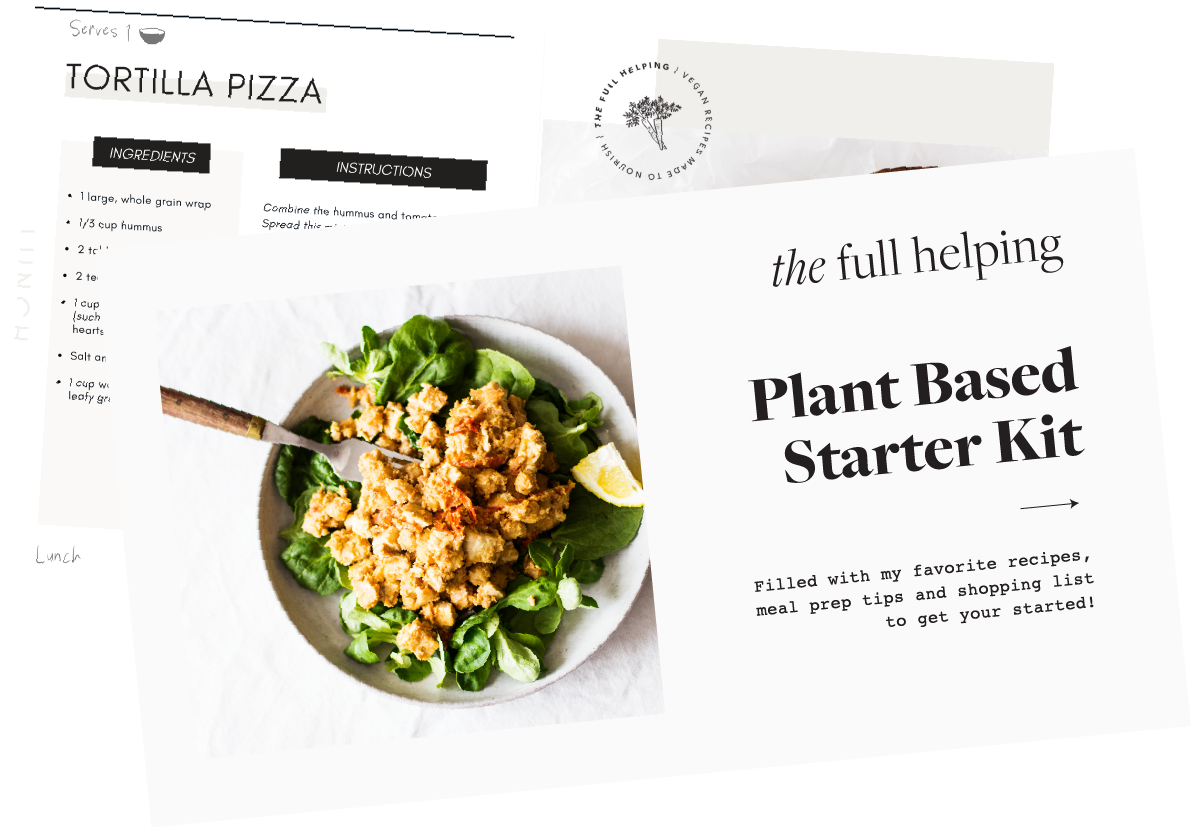I call this dish of roasted brown rice and beans a casserole. But “casserole” may be an overstatement.
When I think of “casserole,” I think of lasagna, enchiladas, casseroles, or something similar.
This really is a “dump and bake” recipe—you put a bunch of ingredients in a casserole dish, cover them, and let the oven do all the work.
It couldn’t be easier. And thanks to the wholesome ingredients of brown rice, black beans, and broccoli, the dish is hardly more nutritious.
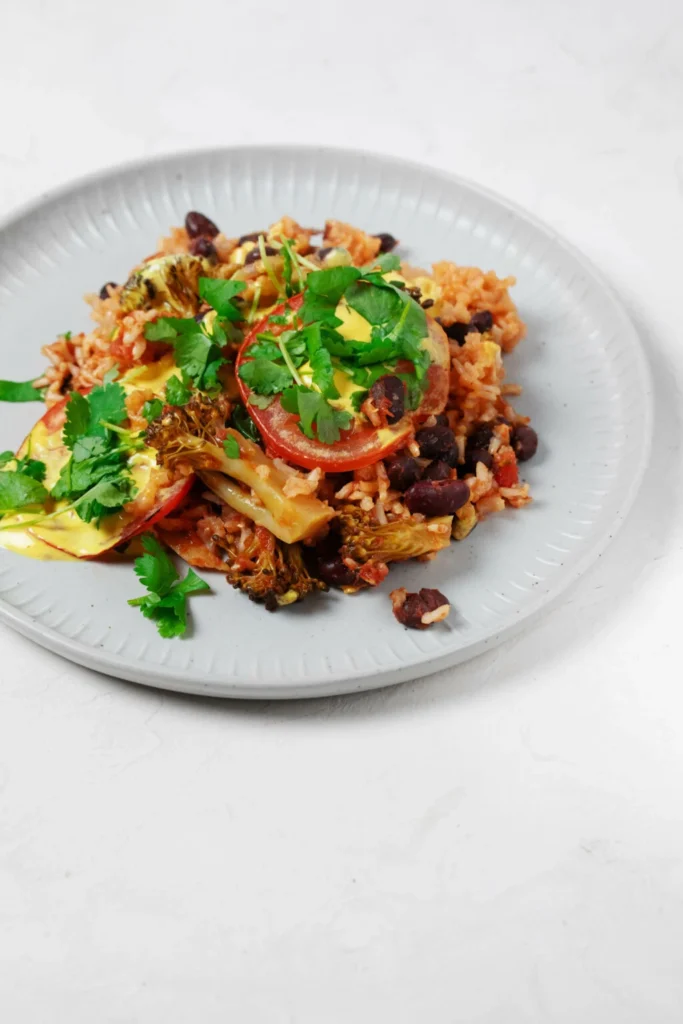
The taste of roasted brown rice
Rice is probably the only grain more valuable in my kitchen.
I usually make all kinds of colors—brown, white, black/purple, red—and all kinds of shapes: short, long, and medium.
Rice is nutritious, healthy, and versatile. It is a source of B vitamins, folate, magnesium, potassium, and selenium. Brown rice is a good source of dietary fiber.
I usually cook rice on the stove. However, this recipe reminds me of how stress-free and effective baking rice can be.
Various rice can be cooked by rinsing the grains, placing them in a casserole or square baking dish, adding the liquid, covering them tightly, and baking until the grains are cooked.
Usually, this takes a little longer than cooking rice: about 1 hour for brown rice and 25-30 minutes for white rice. The oven I used was 375°F / 190°C.
When baking rice yourself, it is helpful to use hot water: boil the water before adding it to your baking pan.
However, the water doesn’t have to be boiling, and I’ve found that the need to boil is reduced when the rice is mixed together. Room-temperature water or broth (not cold) should suffice.
In this brown rice casserole dish, the rice doesn’t bake on its own. It is baked with seasonings and other ingredients to make a hearty and complete dish.

A pair of much-loved ingredients
I really don’t need to praise rice and beans. Both ingredients are popular in recipes worldwide, especially in the Americas and Africa.
Like a time-honored recipe or ingredient pairing, the combination of rice and beans is nutritious.
Rice and beans together provide:
- Vegetable protein
- Fiber
- iron
- B vitamin
- magnesium
- potassium
- Calcium *(This depends on the type of bean)
- phosphorus
- Vitamin E
A “complete” plant protein
You may have come across rice and beans as examples of “complete” proteins. What does that even mean?
In my article, I explored combinations of protein-rich plant-based foods, but here’s the summary: Proteins are made of different amino acid sequences. In a sense, amino acids are the “building blocks” of proteins.
When we eat protein, our digestive system breaks down the protein molecules, releasing amino acids for absorption. This occurs mainly in the jejunum of our small intestine.
We don’t just get amino acids from food. Instead, our bodies can produce many of the amino acids needed for protein synthesis, such as those needed to make peptide hormones or neurotransmitters.
However, nine other amino acids, known as “essential amino acids,” cannot be produced endogenously. We must get them from food.
A “complete protein” is a food source containing all nine essential amino acids.
This protein is sometimes referred to as a “high-value” or HBV protein. LBV, or low-value protein, lacks one or more of nine essential amino acids.
Animal proteins, such as meat, fish, whey, and eggs, are HBV proteins. The same applies to specific plant proteins, such as quinoa, soy, or cannabis hearts.
Other plant proteins are LBV proteins, which contain some essential amino acids but not all.
When I first became a vegetarian, there was much discussion about the importance of eating whole plant-based proteins on my plate.
Nutrition education has changed over time. Today, we know that a person who regularly consumes a variety of protein sources eventually gets all the essential amino acids. The body then uses these amino acids as needed.
In other words, you don’t have to stress about getting complete protein at every meal. Instead, it would help if you focused on getting enough protein from various foods: beans, tofu, tempeh, wheat, etc.
Of course, it’s an easy win when the recipe’s ingredients provide all the essential amino acids. This brown rice casserole with broccoli and beans is just such a recipe.
I am speaking of beans; which ones should I use in my recipes?
When I make a brown rice casserole, I like combining black and kidney beans.
But that’s just a suggestion. You can, of course, substitute other kinds of beans for my choice. Casserole dishes can be used:
- cowpea
- bean
- White beans (cannellini or Great Northern)
- chickpea
- Ormosia bean
- Cream bean
Do I need brown rice?
No, you don’t. I recommend using brown rice for the casserole, but this recipe can also be made with white rice.
Many nutrition clients ask me whether brown or white rice is better. My answer is both. I usually use both in my cooking.
From a health perspective, brown rice contains rice bran and germ, so it has more fiber and protein than white rice and is slightly higher in micronutrients.
However, it is worth mentioning that the difference in fiber is about 3 grams. That’s not nothing – the USDA’s recommended adult fiber intake is 25 grams for women and 38 grams for men – but it’s also a slight difference.
If you love white rice, choosing to enjoy it isn’t a make-or-break nutritional issue. This is especially true if your diet has a lot of fiber from other sources, which many plant-based eaters do.
Having said all that, I love the nutty flavor of brown rice in this recipe.
I also like the texture of brown rice in casseroles: When I test with brown and white rice together, the rice tends to clump together, creating a mushy effect.
You can replace brown rice with an equal amount of long-grain white rice. If you do this, you may only need to bake the casserole dish for 30 minutes.
A wholesome set of ingredients
Many casseroles call for melted cheese on top. I love the convenience of store-bought vegan cheese, but I’m also a big fan of homemade vegan cheese.
I’ve made a variety of vegan cheese recipes over the years. The cashew cheese recipe is the first one I’ve perfected and used most often.
But with cashew leading the way, I’ve expanded my selection to include 10-minute vegan ricotta cheese, vegan yellow cheese Sauce, melted vegan cashew mozzarella, cashew Parmesan, and all-in-one vegan cashew cashew keso Sauce.
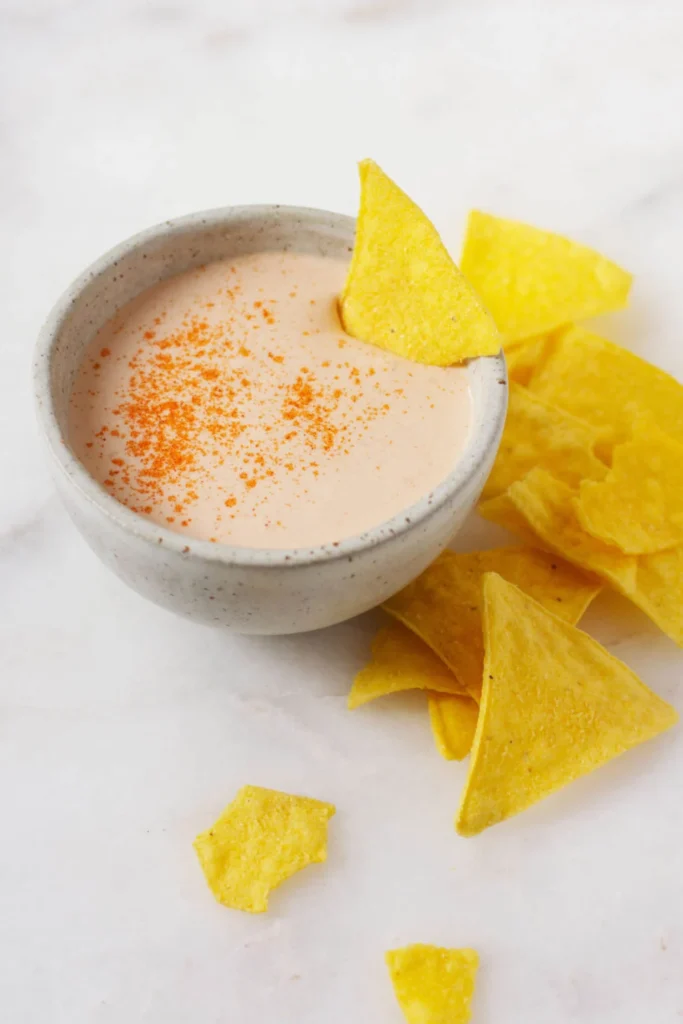
This is the cashew cheese I used to make the casserole. It adds creamy ingredients to the recipe, some rich “cheesy” flavors (thanks to the lemon juice, tomato sauce, and nutritional yeast), and decorative ingredients.
Since the top of the casserole needed a little color, I added grilled tomato slices, which you’ll read more about in the recipe steps and instructions.
I love using this method for lasagna, vegetarian pasta, and brown rice casseroles.
How to make a brown rice casserole with broccoli and beans
Are you tired? Is it emphasized? Going through a cooking routine?
Brown rice casserole is your recipe.
First, you don’t have to do anything. Instead, just pour the ingredients into an oven-safe dish and let the oven do the work.
Also, there is no need to mince the Onions or garlic before transferring the casserole to the oven.
To add the allium, I used salsa, a method I use to make chickpeas in a chickpea burrito bowl.
Salsa, especially grilled tomato, contains Onions that have been “bitten” soft by the raw. Using a can of baked salsa in a recipe is like adding prepared Onions, tomatoes, garlic, and other seasonings to your dish.
No cutting or cutting is required.
So grab your favorite jar of delicious salsa, two cans of beans in the pantry, a bag of rice, and some green stuff, and let’s get started.
Step 1: Preheat the oven
To make this recipe, keep the oven temperature at 375°F / 190°C.
Step 2: Place the ingredients in an oven-safe dish
There’s no need for fancy action here. Add the rice, beans, salsa, a little avocado oil, cauliflower, and vegetable broth to a 9-by-13-inch / 24-by-36cm baking dish.
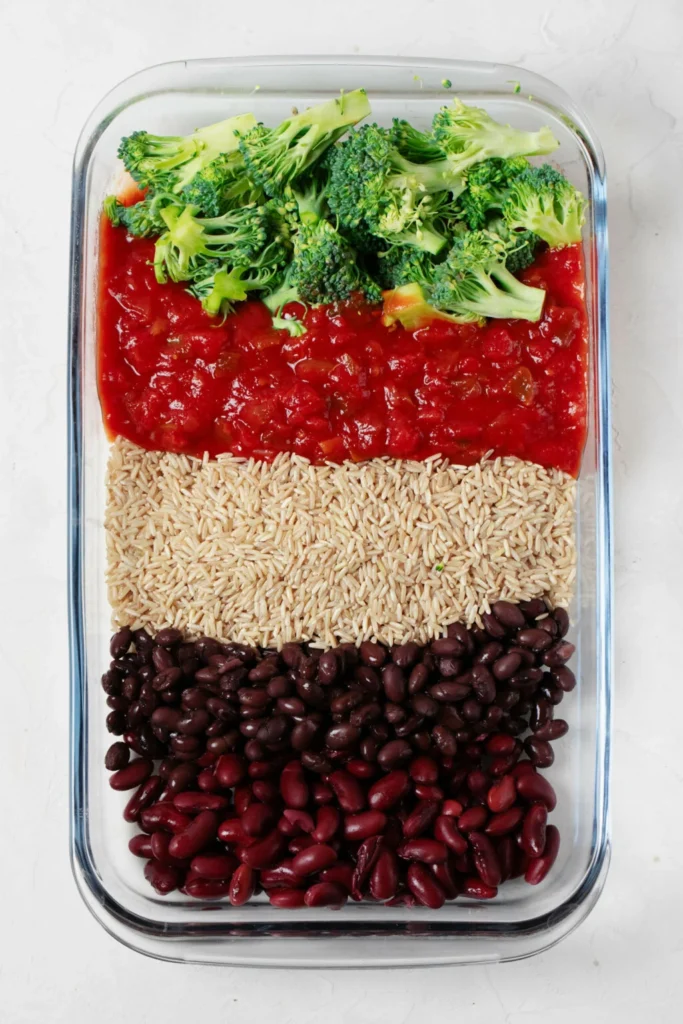
I used cauliflower in this recipe because it is my favorite vegetable. It is easy to work with, both fresh and frozen, and very resistant to roasting. But you can also use cauliflower flowers, sliced zucchini, or green beans.
Avocado oil helps keep the rice grains fluffy and unique and retains flavor in recipes.
Step 3 Bake
The brown rice casserole must be baked in the oven for an hour. When it’s done, the top should darken. During the cooking process, the tomato slices and beans will float on top.

The rice should absorb all the juices and be tender.
Step 4: Decorate (if you like)
You can give your earthy, not particularly photogenic, brown rice casserole a little extra decoration and love.
I do this by slicing the steak and tomatoes and layering them on a freshly baked casserole dish. Then, I set the oven to high.
Place the casserole under the oven and bake for 3-5 minutes, until the tomato slices are shriveled and look soft or even a little brown in places.

The roasted tomato slices on the casserole add some color and a nice touch.
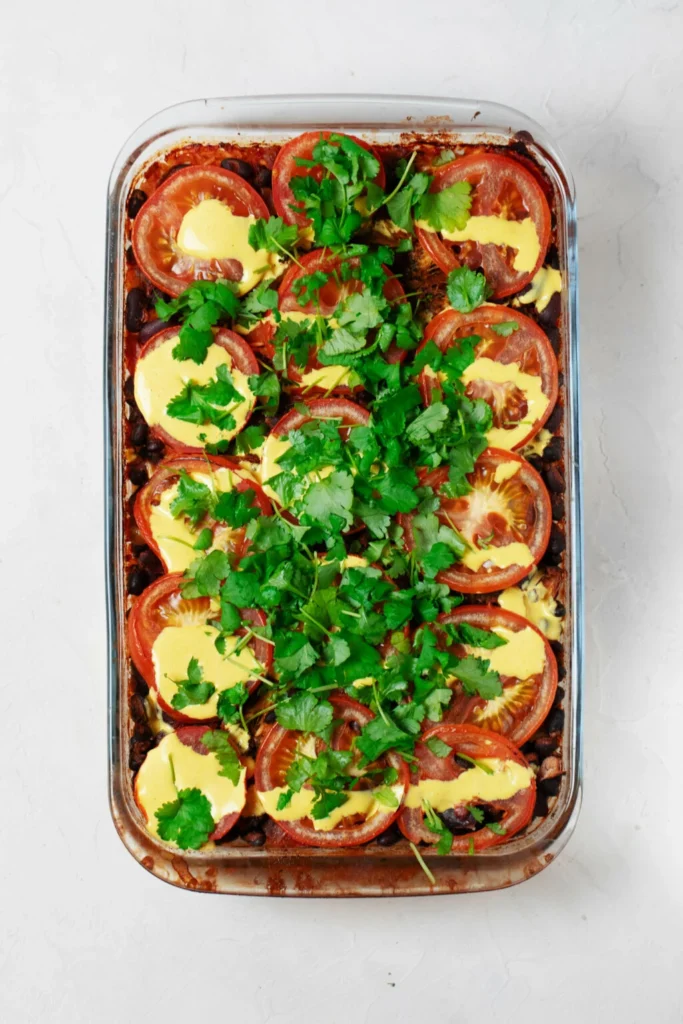
Cashew cheese sauce adds a creamy, cheesy flavor to the casserole, and freshly chopped herbs add a pleasing hue.
Then, pour the cashew cheese sauce over the casserole. I like to add a little fresh chopped coriander after doing so to add a green flavor.
If you don’t have time for these finishing touches, that’s okay. Baked rice and beans are still nutritious and delicious.
Step 5: Eat or store (including freezing option)
Now, you can cut the casserole into square pieces and dig in. Serve with your favorite side salad, salad, or other simple vegetarian vegetable dish.
Brown rice casserole is also a perfect vegetarian meal preparation option! The slices can be stored in an airtight container in the refrigerator for up to 5 days.
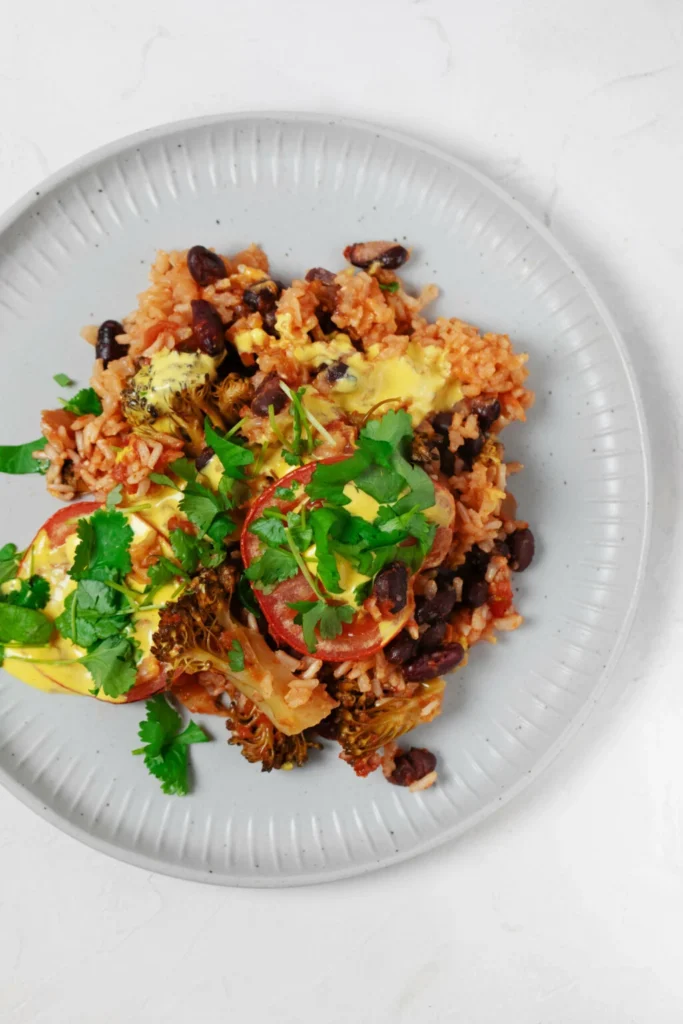
They can be frozen for up to six weeks and thawed overnight in the fridge before serving.
More rice and bean dishes
I have some advice if you eat rice and beans as often as I do. They may inspire you to approach this time-honored collaboration in a new way.
- Rice, beans, tofu and vegetables
- Coconut, sweet potato, rice and beans
- A pot of turmeric rice, beans, and vegetables
- Rice and bean feather roll
- Black bean coriander bowl
- Lemon dill zucchini and chickpea rice
This is my favorite new member.
It’s not the most gorgeous or complicated casserole you’ll ever make. But it’s a hearty and wholesome food you can make with almost no effort – and that’s a win in my book.
Ingredients
1 1/2 cups long-grain brown rice (270g)
1 1/2 cups cooked black beans (240g or 1 15oz / 425g can, drained)
1 1/2 cups cooked kidney beans (240g or 1 15oz / 425g can, drained)
16 oz salsa optional, preferably roasted salsa (light, medium, or spicy)(475 ml)
1 1/2 tablespoons avocado oil
2 cups cauliflower (or mixture of cauliflower and cubed cubes)(200g)
1 TSP cumin powder
1/2 teaspoon sweet paprika or smoked paprika (optional)
1/4-1/2 TSP garlic powder (adjusted to taste)
2 1/4 cups vegetarian chicken or vegetable soup at room temperature (530ml)
1 steak tomato, thinly sliced across
1 batch of cashew cheese sauce (Substitute store-bought vegan cheese sauce or shredded vegan cheese)
Chopped fresh parsley or coriander leaves (optional, for garnish)
Instructions
- Preheat the oven to 375°F / 190°C.
- Place the rice, beans, salsa, avocado oil, broccoli, cumin, paprika (if using), garlic powder, and broth in a 9 x 13 inch / 24 x 36 cm baking dish. Stir well. Cover the baking sheet tightly with tin foil. Transfer the dish to the oven and bake for 1 hour.
- Take the baking sheet out of the oven. Turn the broiler up. Spread thin tomato slices on top of the baked rice and beans.
- Place the casserole under the oven and roast for 3-5 minutes, or until the tomatoes have shriveled and look cooked.
- Drizzle the cashew cheese sauce over the casserole, making a zigzag pattern. Finish with freshly chopped coriander or parsley leaves. Cut the casserole into slices and add some queso sauce to the table.
- The casserole can be stored in an airtight container in the refrigerator for up to 6 days or frozen for up to 6 weeks.

I look forward to hearing your thoughts on this stress-reduction formula, folks. The next time you see a jar of your favorite salsa at the store, it’s a good reason to buy it.


